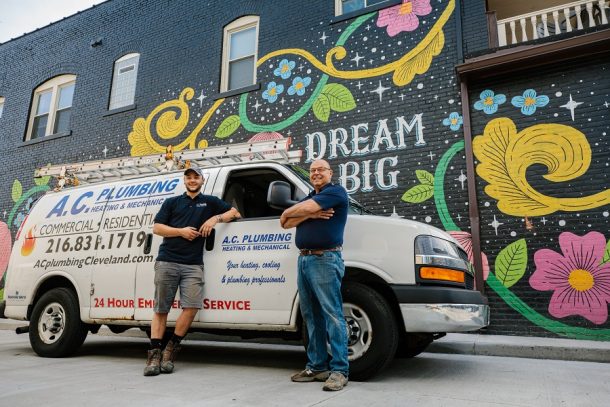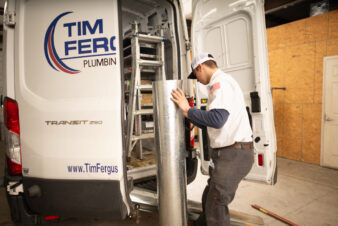Ever thought about the chemistry between your local shop and its neighborhood? Whether it’s a cozy cafe or a sprawling corporation, there’s an intriguing, often glossed-over, tale of interaction with its local setting. Sure, businesses are here to make profits, but have you noticed how they quietly mesh with, and leave a mark on, their environments? Some may unknowingly place themselves in bubbles, oblivious to the vibrant life buzzing around them. Let’s delve a little deeper and explore how businesses and their localities can be more than just neighbors – they can be intricate partners.

A Mutual Lift: Can We Grow Together?
Imagine a road where businesses and communities walk side by side, each step fostering a connection that transcends mere transactions. It seems quite elementary, right? Business thrives, the community prospers. Yet, why do some businesses overlook this beautiful, symbiotic relationship with their community? Let’s think about the nuances of this mutual journey, exploring the verdant possibilities it holds.
Why is investing back into the local community often seen as a generous afterthought and not a strategic investment? When a business seeds a fraction of its profits into local ventures – be it schools, health clinics, or infrastructure – it’s not just a donation. Picture it instead as planting seeds. Seeds that will one day blossom into a resilient, capable local workforce and a vibrant consumer base.
Consider the heartwarming stories we’ve heard of small businesses championing local causes, sponsoring local sports teams, or larger corporations funding community projects. Doesn’t that stir a sense of community pride and a favorable perception of the business? That’s more than just goodwill; it’s strategic relationship building, where businesses help nurture a society that, in return, nurtures them back.
Yet, often this two-way street is less traveled than it should be. Many businesses, particularly those with sights locked onto balance sheets and quarterly reports, may miss the forest for the trees. They might lose sight of the rich, sustainable growth that can stem from pouring into the community that houses them.
Economic Harmony: Can Prosperity Be A Two-Way Street?
Navigating the web of economic relationships between businesses and communities shows a vibrant exchange, rich in shared benefits and obligations. Have you ever taken a moment to observe the ebb and flow of prosperity between a business and its local environment? A flourishing business isn’t an island; it radiates vitality, inviting other ventures and investments and painting a picture of a bustling local economy. And this isn’t simply a one-way street; it’s a dynamic, bustling highway of mutual enrichment.
A thriving business acts like a magnet, doesn’t it? It pulls in additional businesses, investments, and consequently, elevates the local economy, often paving the way for spruced up amenities and infrastructures in the community. Improved schools, more robust healthcare facilities, and enhanced living conditions gradually intertwine with the prosperity of the business, crafting a landscape where the community and commerce flourish side by side.
Conversely, communities are not passive actors in this narrative. Ever noticed how a vibrant, supportive community breathes life into businesses, offering not just manpower but becoming active promoters and customers of their products and services? They shape an atmosphere ripe for business prosperity, supplying not just a skilled workforce and generating demand but also becoming impassioned advocates of the business, propelling its presence beyond local boundaries. Isn’t there a symmetry in how the success of one entity feeds into the prosperity of the other, fostering a shared journey towards mutual affluence?
Leaving Gentle Marks: How Do We Tread Lightly Together?
Moving forward into the realm of ‘ethical footprints,’ we find that it’s more than a modern mantra – it’s the bedrock on which contemporary businesses build their future. While sustainable practices undoubtedly help mitigate environmental impacts, how impactful is it in resonating with a consumer base that is increasingly becoming eco-conscious?
Steering towards sustainability, businesses are not just safeguarding the environment but are also crafting an identity that is harmoniously in sync with evolving consumer tendencies. They position themselves as entities that are not only economically savvy but also environmentally responsible, securing footholds in marketplaces that value green practices. Isn’t this alignment with sustainable values and consumer preferences a strategic move to ensure the business not only thrives today but also cements its place in the markets of tomorrow?
And while mitigating environmental impact is undoubtedly pivotal, have you considered how embedding sustainability can also weave into a business’s operational efficiency and financial strategy? Embracing green practices, businesses are not only curators of the environment but also smart strategists, ensuring their operational costs are optimized and they qualify for various incentives aimed at promoting sustainable practices. While the skills needed to pursue this vision are often lacking in businesses, opportunities exist to enlist the skills of specialists like an environmental engineer company who can provide consultation to determine smart strategies focused on sustainability and environmental impact.
Inclusion And Diversity: Is Your Business A True Reflection Of The Community?
Let’s pause for a moment and reflect: In this globalized world where boundaries are continuously blurring, how often do we witness the diminishing glow of localized cultures and traditions? Herein lies a golden opportunity for businesses, particularly those embedded within specific communities, to not only prosper but also become torchbearers of local cultural and social values.
Local businesses are more than just economic entities; they’re integral threads woven into the social and cultural identity of their communities. And doesn’t this give them a unique position to preserve, celebrate, and cultivate the rich, cultural values intrinsic to their locale? Imagine, for instance, a business that not only recognizes but rejoices in local festivals, traditions, and norms, integrating them into its organizational culture. This doesn’t only mean allowing space for traditional practices and events within the working schedule (although that’s a great start!). It goes beyond, blending local motifs and themes into branding, engaging in local cultural events, and perhaps even becoming a sponsor or advocate for them. By showcasing local artisans, musicians, and cultural ambassadors, businesses can actively participate in the perpetuation and evolution of local cultures and traditions, don’t you think? The ramifications of this engagement stretch far beyond goodwill. Engaging in such practices not only crafts a positive brand image but also fosters a deeper, more personal connection with the community. It creates a resonance that is not easily replicated by entities that view business purely through the lens of profit and loss. It’s not merely about doing business; it’s about doing business while honoring, celebrating, and nurturing the rich cultural soil from which it sprung.
In wrapping it up, a business is so much more when it intertwines its economic goals with community wellness and environmental sustainability. This isn’t just about profit and loss; it’s about becoming a chapter in the community’s story. And isn’t it in this harmonic convergence that businesses carve out their true legacy, becoming entities that didn’t just thrive but also enriched the communities and environments that welcomed them?




Join the conversation: